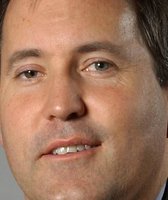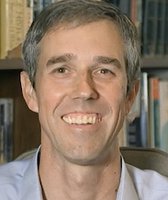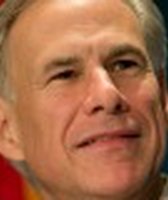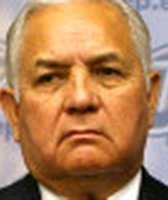Stand up for the facts!
Our only agenda is to publish the truth so you can be an informed participant in democracy.
We need your help.
I would like to contribute
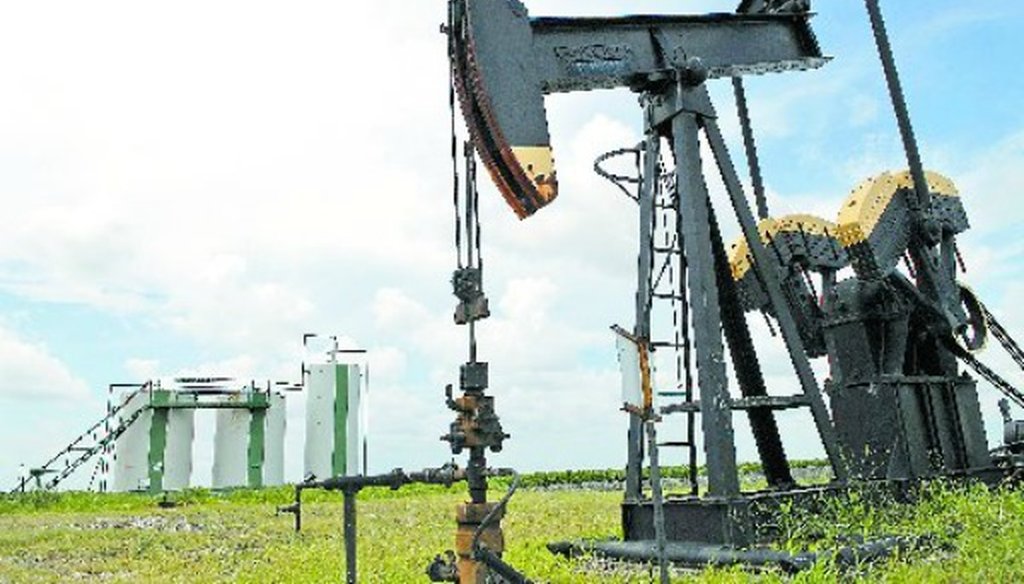
The latest oil slump in Texas likely explains the state economy's No. 21 rank in a national analysis (Bloomberg News photo, 2006).
It’s commonplace for Texas leaders to crow about the state’s swaggering economy.
In August, Gov. Greg Abbott declared the state had the world’s 10th-largest economy. Mostly True, we found. Abbott didn’t take into account far more populous California.
More recently, Abbott in March accepted Site Selection magazine’s designation of Texas, for the fifth straight year, as the nation’s top-performing state for capital investment and job creation. Separately, the Federal Reserve Bank of Dallas announced March 20: "Economic growth continues to accelerate in Texas across sectors and metropolitan areas."
So we paid mind in December when the Texas Democratic Party said in a press release: "With Republicans like Gov. Greg Abbott and Lt. Gov. Dan Patrick in the driver’s seat, Texas’ economy has plummeted from 3 to 21." The release also said: "Our state’s economy is slipping."
Really?
Typically we’d Truth-O-Meter such a claim. But in this case, we ran up against a clear-cut conflict of interest; the cited rankings were devised three years apart by Louis Jacobson--a senior PolitiFact correspondent in Washington.
That’s us!
So we’re not going to rate the accuracy of claims tied to Jacobson's rankings.
Still, we looked into how Jacobson composed each ranking and harvested input from Texas economists, ultimately finding the oil slump probably knocked Texas down and, perhaps, it would have helped if Jacobson grouped states by population. It's also worth stressing that governors don't control economies, which are far more complex for any official to direct.
Reporter's methodology
Jacobson reached his rankings for stories published in Governing magazine.
In a September 2013 Governing story, Jacobson pegged the Texas economy at No. 3 nationally behind the economies of Washington state and Iowa. Next came Utah, North Dakota, Hawaii, Minnesota, Oregon, West Virginia and Alaska, the story said, with Delaware, Mississippi, Connecticut and Arkansas having the nation’s weakest economies.
Jacobson checked first on how each state ranked compared to others by five variables: the latest state unemployment rate; improvement in that rate over the past year; per capita state GDP in 2012; percent change in real state GDP from 2011 to 2012; and percent change in state personal income from the last quarter of 2012 to the first quarter of 2013. Next, he added up each state’s ranks by factor and after double-weighting two factors--current unemployment and percent change in real GDP. Finally, he divided the total by seven to reach total-economy rankings.
"These variables were chosen to measure both the state's overall economic ranking among its peers as well as its improvement in recent months under the governor's watch," Jacobson wrote.
In Jacobson’s 2016 analysis, a slightly rejiggered formula placed Texas 21st nationally. That August 2016 story listed these economies as the 10 strongest: Massachusetts; Oregon; Delaware; Colorado; California; Tennessee; New Hampshire; Utah; Virginia; and Maryland.
At No. 21, Texas ranked ahead of Washington yet behind Wisconsin. New Mexico, and Wyoming. At the bottom, Alaska and West Virginia tied for 49th, by Jacobson’s calculus.
Jacobson told us the new metric--each state's ranking in job growth through that point in 2016--was suggested by an Arizona State University economist, Lee McPheters. He added that this alone, though, wouldn’t have explained a state’s rise or decline between the analyses.
So why did Texas plunge?
Jacobson emailed: "The obvious difference between 2013 and 2016 was that the oil and gas industry was doing a whole lot better in the year before summer 2013 than it was in the summer before 2016. And oil and gas is a significant factor in Texas' economy. You'll note that other oil and gas states also declined between the two rankings -- North Dakota from 5 to 40, Alaska 10 to 49, and if you include another energy sector, coal, West Virginia from 9 to 49."
A spreadsheet
Jacobson also shared his spreadsheet for the 2016 rankings presenting each factor by state and the results--Texas landing No. 3 nationally for its change in GDP, No. 13 for GDP per capita, No. 22 for its June 2016 jobless rate; No. 36 for its year-to-date change in the jobless rate; and 45th for gains in per capita personal income.
We noticed that if Jacobson had grouped states by population, Texas would likely have fared better.
For instance, Texas tied with Missouri for 22nd among the states for its unemployment rate of 4.5 percent. No. 1 South Dakota had a measly 2.7 percent rate. Yet among the 10 most-populous states, Texas had the lowest jobless rate; the other biggest states had rates ranging from 4.6 percent (Michigan) to 5.6 percent (Pennsylvania).
Another column on the spreadsheet shows Texas at 13th nationally for GDP per capita; Alaska landed No. 1 (at $66,835). Yet among the 10 most-populous states, Texas ($53,707) ran a respectable third behind New York ($63,929) and California ($56,365).
Texas economists cite energy slump
Next, we ran the rankings past Texas economists including Southern Methodist University’s venerable Bernard "Bud" Weinstein.
Weinstein proved dismissive, saying by phone that it’s not wise to compare Texas to smaller states without acknowledging substantive differences. Asked why, Weinstein said: "We have the most complex economies. Some are adjusting to rapid growth, others to significant population declines; they tend to have large metro areas with unique challenges, not found in Iowa." The biggest states, he said, are akin to countries in economic firepower.
Asked why he thinks Texas plunged in the 2016 rankings, Weinstein said that while many states were working their ways back from the Great Recession in 2015 and 2016, Texas sustained regional hits due to plummeting oil prices. "We didn’t create as many jobs" as before, Weinstein said.
Angelos Angelou, CEO of the Austin-based firm Angelou Economics, told us the downturn in the oil and gas industries hampered, but didn’t devastate, the state’s economy. "The effects are only temporary," Angelou said, adding that in a typical year, Texas adds about 350,000 jobs, but in 2016, that number hung around 194,000.
Keith Phillips of the Federal Reserve Bank shared the bank’s March 2017 presentation on the economic outlook for Texas which includes a chart showing that in 2015, Texas ranked 31st in job growth nationally; the state ranked fourth in 2014 and was gaining ground again through 2016, the presentation says.
SOURCE: Presentation, "2017 Texas Economic Outlook: Shifting Into Second Gear," Federal Reserve Bank of Dallas, March 24, 2017 (received by email from Keith R. Phillips, assistant vice president, San Antonio branch, Federal Reserve Bank of Dallas, March 24, 2017)
Phillips said by email: "During the recovery from the Great Recession, Texas was one of the fastest-growing states in the nation -- until oil and gas prices declined sharply in 2015." Texas still managed positive job growth, he said, yet the growth rates trailed national averages. "Given the sharp decline in energy prices," Phillips wrote, "Texas has done well – particularly when you compare it to other energy states," all of which saw net job losses in 2015, the presentation shows.
Seeking to snapshot the Texas oil slump reflected in the rankings, we turned to Bill Gilmer, who directs the University of Houston Institute for Regional Economics.
In an email from UH spokeswoman Amanda Sebesta, Gilmer commented that in parts of the state, "employment growth was quite slow last year because of the oil bust--the obvious explanation. Austin and Dallas are booming, Houston had zero growth, and all the little Midlands and Odessas were in a world of pain. Adds up to mediocre."
But generally, Gilmer said, "Texas is too big and complicated to put into some index."
A couple ahems
Jacobson’s focus in the Governing story was on gauging whether in his top-and-bottom ranked states, gubernatorial approval ratings generally tracked with the rankings.
They did. "No governor in the top 10 states had an approval rating lower than 54 percent," Jacobson wrote, "while six of the governors in the bottom 10 states had approval ratings below 50 percent." On the other hand, Jacobson wrote, several experts suggested voters' understanding of boom-and-bust patterns in the energy sector might be keeping governors' approval ratings higher than they would otherwise be.
An ahem to all of this: Governors (like presidents) don’t control economic conditions. Economists have consistently told us that policies of a governor have a relatively small impact on a state's economy. Too many factors are in play for a single state official to merit credit or blame--arguably no matter where the economy ranks.
This is not to say that governors don’t get blamed or take credit; it’s part of embracing each state's top elected position.
Our Sources
Press release, "Under Republican Gov. Abbott Texas Economy Declines to 21st in the Nation," Texas Democratic Party, Dec. 9, 2016
Truth-O-Meter article, "Greg Abbott says if Texas were a country, its economy would rank 10th in world," PolitiFact Texas, Sept. 15, 2016
Press release, "Texas Wins 2016 Site Selection’s Governor’s Cup Award For Record Fifth Year In A Row," Gov. Greg Abbott, March 1, 2017
Research update, "Texas Economy Expands Broadly," Federal Reserve Bank of Dallas, March 20, 2017
Stories by Louis Jacobson, Governing magazine, "A Good Economy Doesn't Always Mean a Popular Governor," Sept. 9, 2013; "The Best of Times, the Worst of Times: A Ranking of State Economies," Aug. 22, 2016
Email, Louis Jacobson, senior correspondent, PolitiFact, March 10, 2017
Spreadsheet showing calculations for ranking of state economies in 2016 (shared by Lou Jacobson, senior correspondent, PolitiFact Texas)
Telephone interview, Bernard "Bud" Weinstein, associate director, Maguire Energy Institute, Southern Methodist University, March 16, 2017
Telephone interview, Angelos Angelou, CEO of Angelou Economics, March 10, 2017
Email, Keith R. Phillips, assistant vice president, San Antonio branch, Federal Reserve Bank of Dallas, March 24, 2017
Presentation, "2017 Texas Economic Outlook: Shifting Into Second Gear," Federal Reserve Bank of Dallas, March 24, 2017 (received from Keith R. Phillips, March 24, 2017)
Statement, Robert W. (Bill) Gilmer, director, Institute for Regional Forecasting, C.T. Bauer College of Business, University of Houston, March 23, 2017 (received by email from Amanda Sebesta, senior communications coordinator, Bauer College of Business)

